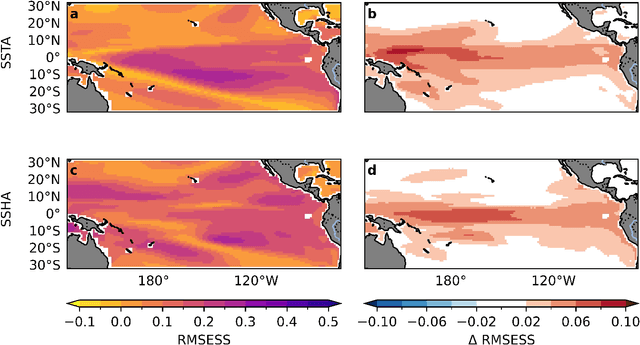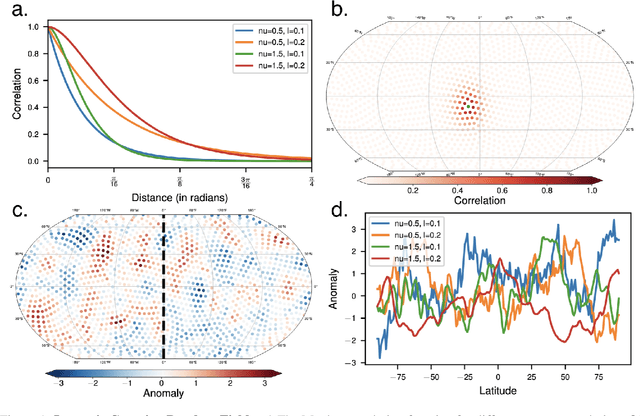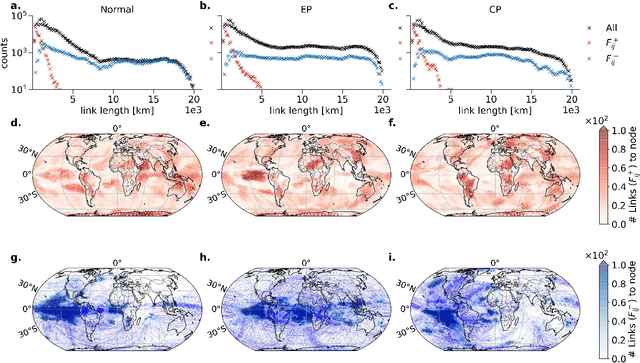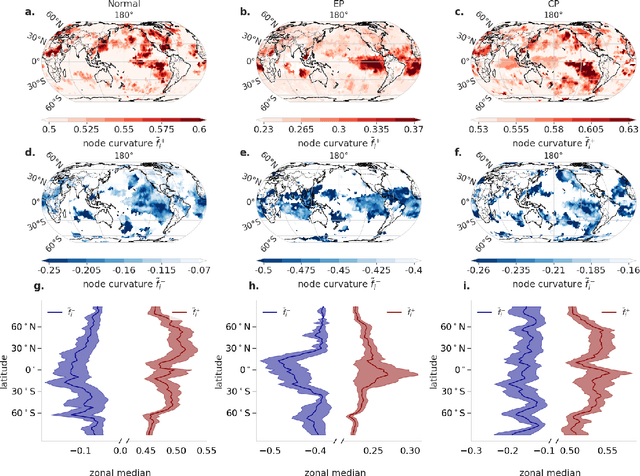Bedartha Goswami
University of Tübingen
A Hybrid Deep-Learning Model for El Niño Southern Oscillation in the Low-Data Regime
Dec 04, 2024



Abstract:While deep-learning models have demonstrated skillful El Ni\~no Southern Oscillation (ENSO) forecasts up to one year in advance, they are predominantly trained on climate model simulations that provide thousands of years of training data at the expense of introducing climate model biases. Simpler Linear Inverse Models (LIMs) trained on the much shorter observational record also make skillful ENSO predictions but do not capture predictable nonlinear processes. This motivates a hybrid approach, combining the LIMs modest data needs with a deep-learning non-Markovian correction of the LIM. For O(100 yr) datasets, our resulting Hybrid model is more skillful than the LIM while also exceeding the skill of a full deep-learning model. Additionally, while the most predictable ENSO events are still identified in advance by the LIM, they are better predicted by the Hybrid model, especially in the western tropical Pacific for leads beyond about 9 months, by capturing the subsequent asymmetric (warm versus cold phases) evolution of ENSO.
A multi-modal representation of El Niño Southern Oscillation Diversity
Jul 21, 2023Abstract:The El Ni\~no-Southern Oscillation (ENSO) is characterized by alternating periods of warm (El Ni\~no) and cold (La Ni\~na) sea surface temperature anomalies (SSTA) in the equatorial Pacific. Although El Ni\~no and La Ni\~na are well-defined climate patterns, no two events are alike. To date, ENSO diversity has been described primarily in terms of the longitudinal location of peak SSTA, used to define a bimodal classification of events in Eastern Pacific (EP) and Central Pacific (CP) types. Here, we use low-dimensional representations of Pacific SSTAs to argue that binary categorical memberships are unsuitable to describe ENSO events. Using fuzzy unsupervised clustering, we recover the four known ENSO categories, along with a fifth category: an Extreme El Ni\~no. We show that Extreme El Ni\~nos differ both in their intensity and temporal evolution from canonical EP El Ni\~nos. We also find that CP La Ni\~nas, EP El Ni\~nos, and Extreme El Ni\~nos contribute the most to interdecadal ENSO variability.
Inductive biases in deep learning models for weather prediction
Apr 06, 2023Abstract:Deep learning has recently gained immense popularity in the Earth sciences as it enables us to formulate purely data-driven models of complex Earth system processes. Deep learning-based weather prediction (DLWP) models have made significant progress in the last few years, achieving forecast skills comparable to established numerical weather prediction (NWP) models with comparatively lesser computational costs. In order to train accurate, reliable, and tractable DLWP models with several millions of parameters, the model design needs to incorporate suitable inductive biases that encode structural assumptions about the data and modelled processes. When chosen appropriately, these biases enable faster learning and better generalisation to unseen data. Although inductive biases play a crucial role in successful DLWP models, they are often not stated explicitly and how they contribute to model performance remains unclear. Here, we review and analyse the inductive biases of six state-of-the-art DLWP models, involving a deeper look at five key design elements: input data, forecasting objective, loss components, layered design of the deep learning architectures, and optimisation methods. We show how the design choices made in each of the five design elements relate to structural assumptions. Given recent developments in the broader DL community, we anticipate that the future of DLWP will likely see a wider use of foundation models -- large models pre-trained on big databases with self-supervised learning -- combined with explicit physics-informed inductive biases that allow the models to provide competitive forecasts even at the more challenging subseasonal-to-seasonal scales.
Pitfalls of Climate Network Construction: A Statistical Perspective
Nov 17, 2022



Abstract:Network-based analyses of dynamical systems have become increasingly popular in climate science. Here we address network construction from a statistical perspective and highlight the often ignored fact that the calculated correlation values are only empirical estimates. To measure spurious behaviour as deviation from a ground truth network, we simulate time-dependent isotropic random fields on the sphere and apply common network construction techniques. We find several ways in which the uncertainty stemming from the estimation procedure has major impact on network characteristics. When the data has locally coherent correlation structure, spurious link bundle teleconnections and spurious high-degree clusters have to be expected. Anisotropic estimation variance can also induce severe biases into empirical networks. We validate our findings with ERA5 reanalysis data. Moreover we explain why commonly applied resampling procedures are inappropriate for significance evaluation and propose a statistically more meaningful ensemble construction framework. By communicating which difficulties arise in estimation from scarce data and by presenting which design decisions increase robustness, we hope to contribute to more reliable climate network construction in the future.
Teleconnection patterns of different El Niño types revealed by climate network curvature
Mar 07, 2022



Abstract:The diversity of El Ni\~no events is commonly described by two distinct flavors, the Eastern Pacific (EP) and Central Pacific (CP) types. While the remote impacts, i.e. teleconnections, of EP and CP events have been studied for different regions individually, a global picture of their teleconnection patterns is still lacking. Here, we use Forman-Ricci curvature applied on climate networks constructed from 2-meter air temperature data to distinguish regional links from teleconnections. Our results confirm that teleconnection patterns are strongly influenced by the El Ni\~no type. EP events have primarily tropical teleconnections whereas CP events involve tropical-extratropical connections, particularly in the Pacific. Moreover, the central Pacific region does not have many teleconnections, even during CP events. It is mainly the eastern Pacific that mediates the remote influences for both El Ni\~no types.
 Add to Chrome
Add to Chrome Add to Firefox
Add to Firefox Add to Edge
Add to Edge